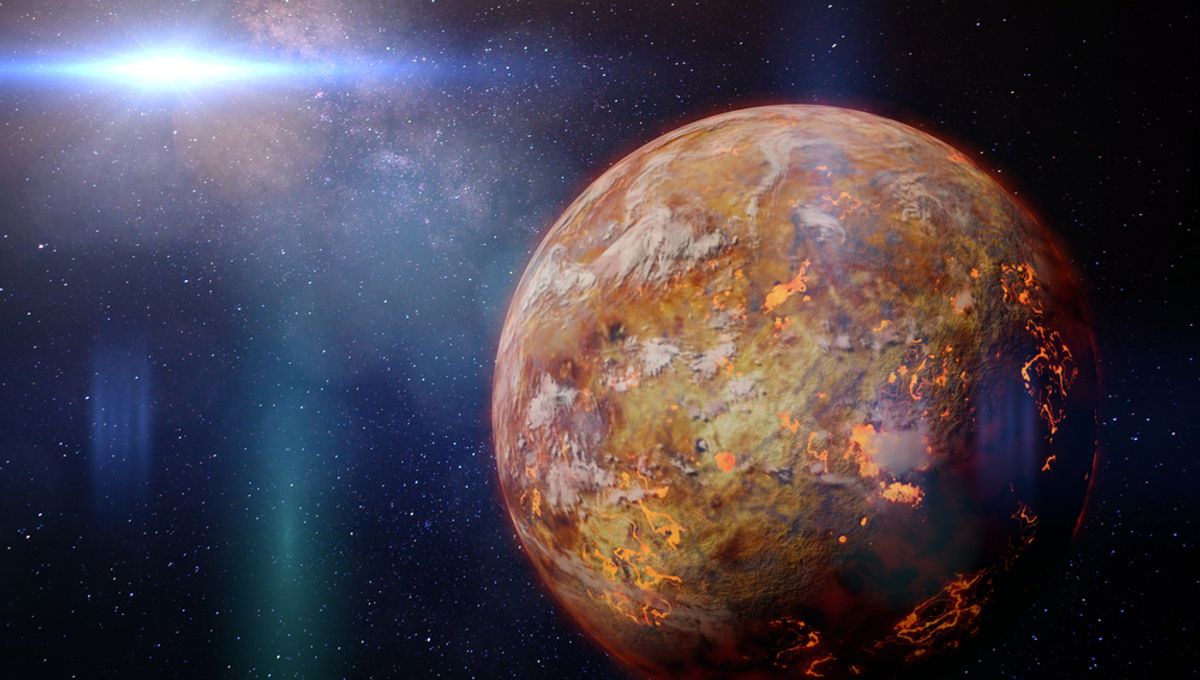
In 1846, astronomer and mathematician Urbain Le Verrier sat down and attempted to locate a planet that had never been seen before by humans. Uranus (grow up) had been moving in unexpected ways, as predicted by the Newtonian theory of gravity.
Though the discrepancies were small, there was a difference between the observed orbit of Uranus and the way Newtonian physics predicted its orbit to be. In July, Le Verrier proposed that the difference could be explained by another planet beyond Uranus, and made predictions as to the orbit of this previously unknown body.
Being a mathematician first and an astronomer second, he wasn’t really interested in finding it with a telescope now that he’d found it in maths, and the task of searching for it was left to German astronomer Johann Gottfried Galle. On September 23, 1846, Galle looked at the spot Le Verrier had predicted the planet would be, and found to be within 1 degree of the spot… the planet Neptune.
Don’t worry, we’re getting to planet Spock.
So, having discovered a new planet by looking at the orbit of another, Le Verrier was called upon to take a look at a planet whose name doesn’t also mean butt hole: Mercury. Mercury, being so close to the Sun, is the most difficult planet in our Solar System to observe (assuming there is no Planet Nine out there). Le Verrier was tasked with plotting Mercury’s orbit using Newtonian physics.
But he couldn’t. No matter how much he tried, Mercury’s eccentric orbit didn’t make any sense. According to Newtonian theory, the planets move in elliptical orbits around the Sun, but observations showed that Mercury’s orbit wobbles more than could be accounted for by the gravity exerted by the other known planets.
Like with Uranus, he believed that this was due to another planet that was altering the planet’s path. He eventually named the planet Vulcan because he was a huge Star Trek fan after the Roman god of fire.
Soon astronomers began to report observations of this planet, the first being by Edmond Modeste on March 26, 1859. Nine months later (he was, at best, an amateur astronomer) he alerted Le Verrier when he saw an article on his work. Based on Modeste’s observations, Le Verrier calculated the predicted orbit of the planet, which he believed would make a transit two to four times each year.
Others reported observing Vulcan but could be explained by sunspots, known planets, and observations of nearby stars. Le Verrier refined his calculations based on other observations, but nonetheless, it was never seen in any way that you could describe as concrete.
The planet wasn’t some brief fad, however, but endured for around 70 years. In 1879, newspapers carried reports that Vulcan would transit the Sun, based on calculations by esteemed astronomer Theodor von Oppolzer. It never showed. It was searched for during pretty much every eclipse during this time, but never seen.
So, why haven’t you learned of Vulcan when you were studying the eight planets? Because it very much didn’t exist. The planet which was born out of mathematics by Le Verrier was undone by a new theory of physics: Einstein’s theory of general relativity.
Einstein’s theory was able to predict the path of Mercury without any extra planets affecting its wobble. The theory puts gravity as a result of the curvature of spacetime by massive objects, with objects closer to the massive objects being more affected. So the changing, or wobble, of Mercury’s orbit could be explained by the theory, while the outer planets – which are less affected by the curvature – are little affected by the new calculations, given their distance from the Sun.
As such, Einstein’s theory could explain both the orbit of Mercury and the orbit of Earth, Mars, Jupiter etc without recourse to extra planets. Planet Vulcan was no more.
An earlier version of this article was published in June 2021.
Source Link: Planet Vulcan: The Lost 19th Century World Einstein "Erased" From Our Solar System